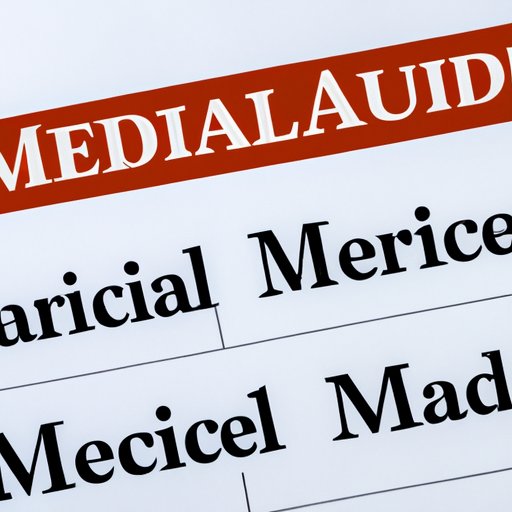
I. Introduction
There’s a common misconception that Medicare is entirely free once you turn 65. While there are definitely advantages to enrolling in Medicare, it’s important to understand that there are costs associated with different types of coverage. In this article, we’ll clear up some confusion around Medicare costs and coverage options, and explore what every senior needs to know about this important program.
II. Understanding Medicare: Is it really ‘free’ at age 65?
There are four different parts to Medicare coverage: Part A (hospital insurance), Part B (medical insurance), Part C (Medicare Advantage), and Part D (prescription drug coverage). Each type of coverage comes with its own set of costs, and many seniors choose to enroll in multiple parts of Medicare to ensure comprehensive coverage.
Part A coverage is generally free if you or your spouse paid Medicare taxes for at least ten years while working. However, there are still costs associated with Part A coverage, such as deductibles and copayments for hospital stays over a certain length. Part B coverage, on the other hand, comes with a monthly premium that varies depending on your income level. Additionally, you’ll need to cover annual deductibles and coinsurance payments for medical services.
Part C (Medicare Advantage) plans are offered by private insurance companies, and combine Part A, B, and often D coverage into one plan. These plans often come with lower deductibles and out-of-pocket costs than Original Medicare, but may have more limited provider networks. Finally, Part D coverage helps pay for prescription drugs, and you will usually need to pay a monthly premium for this coverage as well.
III. The Cost of Medicare: Myths and Realities
Despite the rumors that Medicare coverage is entirely free, many seniors end up paying significant amounts out-of-pocket for healthcare services. For example, Original Medicare does not cover vision, dental, or hearing services, meaning that you’ll need to either pay out of pocket or enroll in a supplemental insurance plan to cover these costs. Additionally, Medicare Advantage plans often come with high deductibles or copays for certain services, such as out-of-network doctor visits or emergency room visits.
To bridge these gaps, many seniors opt to enroll in a Medigap plan, which provides additional coverage for out-of-pocket costs. It’s important to note that you may not be able to purchase a Medigap plan if you’re already enrolled in a Medicare Advantage plan, so it’s important to do your research before choosing a coverage option.
IV. What Every Senior Needs to Know About Medicare
In order to be eligible for Medicare coverage, you must be at least 65 years old and a US citizen or permanent legal resident. There are also certain enrollment deadlines that you’ll need to be aware of, as failing to enroll during the specified time period can result in penalties or gaps in coverage.
When enrolling in Medicare, you’ll need to choose between Original Medicare and a Medicare Advantage plan. As we discussed earlier, Original Medicare provides coverage for hospital and medical services, while Medicare Advantage plans combine these benefits into one plan. Additionally, you’ll need to choose whether or not to enroll in prescription drug coverage (Part D) and Medigap coverage.
V. Is Medicare Worth It? Considering the Pros and Cons
Medicare coverage can provide peace of mind and affordable healthcare to seniors, but there are also potential drawbacks to consider. For example, some services may not be covered under certain plans, meaning that you may need to pay out of pocket for these expenses. Additionally, Medicare Advantage plans may have limited provider networks, so it’s important to make sure that your current doctors are in-network before enrolling in a plan.
Overall, the decision to enroll in Medicare will depend on your individual healthcare needs and financial situation. However, for most seniors, the benefits of Medicare coverage outweigh the potential drawbacks.
VI. Navigating Your Options: Choosing the Right Medicare Plan at Age 65
When it comes to choosing the right Medicare plan for your needs, there are several factors to consider. Some of the most important aspects to keep in mind include cost, coverage, and doctor availability. You’ll also want to research the provider networks for each plan option, and make sure that your preferred doctors are included.
In order to enroll in Medicare, you’ll need to sign up during your Initial Enrollment Period, which begins three months before your 65th birthday and ends three months after. If you miss this deadline, you may face penalties or gaps in coverage, so it’s important to stay aware of your enrollment deadlines.
VII. Maximizing Your Medicare Benefits: Tips and Tricks for Saving Money
While Medicare coverage can be costly, there are several ways to reduce your out-of-pocket expenses and get the most out of your coverage. For example, many seniors save money on prescription drugs by enrolling in a Medicare-approved drug discount program. Additionally, Medicare provides coverage for many preventative services, such as flu shots and cancer screenings, that can help you stay healthy and avoid costly medical expenses down the line.
VIII. Conclusion
While Medicare coverage may not be entirely free at age 65, it can provide significant peace of mind and affordable healthcare options to seniors. By understanding the costs and coverage options associated with different parts of Medicare, you can make informed decisions about your healthcare coverage. Remember to do your research, consider all of your options, and enroll during your Initial Enrollment Period to ensure that you get the most out of your Medicare benefits.




